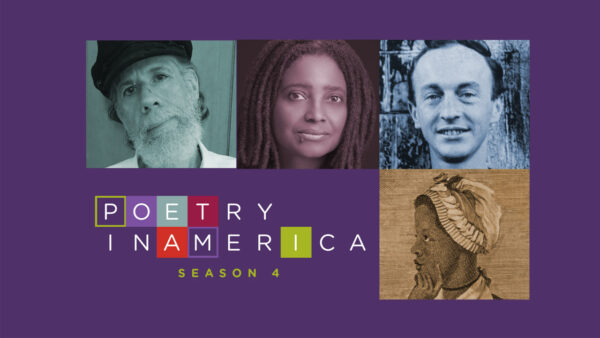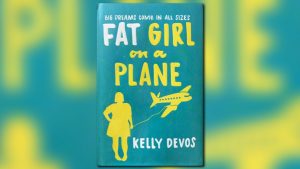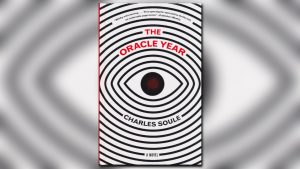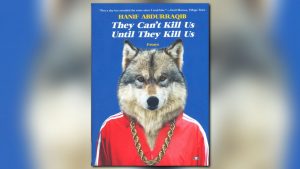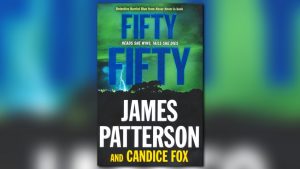In his book Spillover, David Quammen tracks what could be the next deadly virus to infect humans.
He explains the origins of notable diseases that transfer from nonhuman animals to humans such as SARS, avian influenza, and AIDS. These diseases that have spilled over from other species have caused pandemics and spread across the globe easily due to dense human populations and increased importation and exportation of infected livestock.
Quammen’s book questions the role of humans in cases of spillover and whether there are any preventive measures that can be taken.
VOICEOVER: "Books & Co." is made possible by the Virginia G. Piper Center for Creative Writing, serving writers and readers in the Phoenix metropolitan area, the state of Arizona and the world.
ALBERTO RIOS: Welcome to "Books & Co.” Bienvenidos, todos. I'm your host Alberto Rios and we're joined today by best-selling author David Quammen talking about his most recent remarkable novel, "Spillover: Animal Infections and the Next Human Pandemic." It's published by W.W. Norton. Welcome, David.
DAVID QUAMMEN: Thank you, Alberto, good to be here.
ALBERTO RIOS: I'm excited to talk about this book. It’s so full; it's a rich book, both scary and full of answers both. But you say something somewhere in the middle, it’s kind of buried, that just made me laugh out loud and I'd like to start with that. You said, “Mathematics, to me, is like a language I don't speak, though I admire its literature in translation.” I laughed because that's how I felt about the science in the book. I don't speak its language, but I admire the way you gave it to me in translation.
DAVID QUAMMEN: There is a lot of science, and only the tiniest, tiniest bit of math. And, you said novel in the introduction and I want readers to know it's a nonfiction book. I hope it reads like a novel but a nonfiction book filled with science and history and travel, and a certain number of detective stories. It's about emerging diseases and where they emerge from. Every emerging disease begins a detective story. So what I've tried to do in the book is to tell the story of these scary new diseases that have emerged and are sweeping around the world from Ebola to West Nile to SARS to, of course, HIV/AIDS. To tell the story and the stories underneath the stories of each of those, the explanation for why they’re emerging, how they’re emerging, where they emerge from.
ALBERTO RIOS: You mention that they are new. You go to great lengths to show us how old in some ways they actually are, we're simply discovering them now and experiencing them. When I said novel earlier, what I thought was so wonderful about this is you write the book, you don't simply report the data. That had novelistic I think tendencies. It's so great to hear you refer to it in some fashion as a detective novel because that’s what I was thinking that all the way through. You talk about means, motive and opportunity, which detective novels are always talking about. You talked about the pathogens. Let's – maybe we should just start defining some terms. The book is called "Spillover," so maybe you could talk about spillover.
DAVID QUAMMEN: Absolutely. Defining terms is a good ABC-way of getting into a complicated subject. The key terms through this book are, first of all, zoonosis, zoonotic disease. Zoonosis is an animal infection that's transmittable to humans, and that’s the subject of the book: zoonotic diseases, those infections that come to us from other species. It turns out that most of the infectious diseases of humans come to us from wildlife. That includes some of the infamous old ones like bubonic plague, anthrax, influenza, but also some of the scariest new ones like Ebola and HIV/AIDS. Spillover, the title of my book, is the moment when one of those disease pathogens, a bug, a virus, bacteria, whatever, when it passes from one kind of host, one species into another. When it spills over from monkeys into humans or from rodents into humans. That's the moment when it becomes our disease and not just the disease of some other species of animal.
ALBERTO RIOS: Just for a moment, just to make a comparative, you have the opposite phrase or term, I think it’s anthroponosis or something like that, where it's humans giving a disease to animals. You make this point very well later on, but we're all animals. So, the idea that we’re getting things from animals just means we're sharing it amongst ourselves.
DAVID QUAMMEN: It goes both ways, absolutely. The fact that there is a special fancy term that the scientists use to distinguish diseases that pass from nonhuman animals into humans, from humans to other animals, and it does not contradict the fact that it's really the same phenomenon. It’s that in disease passages, viruses and other things are capable in certain circumstances of leaping from or passing from one species of host to another. With humans, for instance, we are capable of passing some of our diseases to nonhuman primates, to chimpanzees, to gorillas. That’s why if you go to Africa on an ecotourism vacation and say, I want to see the mountain gorillas of Rwanda or Uganda, you are not allowed to go up there and spend an hour with those habituated mountain gorillas, this very endangered subspecies of gorillas, if you're sick, if you’re coughing, if you have a cold, if you have measles, they will not let you go.
ALBERTO RIOS: Why not?
DAVID QUAMMEN: Because they are trying to take care of the gorillas, protect them from getting an anthroponosis human disease.
ALBERTO RIOS: It's fascinating they have taken that into account now. I think that's a relatively new recognition, I would guess.
DAVID QUAMMEN: Yes, it is.
ALBERTO RIOS: We've used that word pathogens. Maybe you could just say what pathogens are.
DAVID QUAMMEN: Yeah, a pathogen is a fancy word for a germ or a bug. There are essentially six groups of organisms that cause disease in humans. There are viruses, bacteria, those are the most famous, protists, we used to call them protozoa, that include the bug that causes malaria. Fungi, something called preons, which are folded proteins and those cause mad cow disease, and some other variants, Creutzfedlt-Jakobe disease, really bizarre, spooky newish diseases. Then the final category is worms, small tiny worms can infect us. So viruses, bacteria, protists, preons, fungi, worms - those six groups, those are the pathogens.
ALBERTO RIOS: And I think that you mentioned bacteria and viruses being the most famous of them and viruses to humankind seem like a relatively new register. That is to say, we didn't know about viruses but we suspected them.
DAVID QUAMMEN: Right, a hundred years ago scientists couldn't even detect a virus or see or isolate a virus. We couldn't see one until the electron microscope was invented. Scientists would infer a virus was there. But, for instance, in 1918, 1919, the influenza, the so-called Spanish influenza, which did not come from Spain, killed about 50 million people around the world. It wasn't until sometime in the 1930s that science actually knew for sure that had been caused by an influenza virus.
ALBERTO RIOS: And the reason we couldn't see them, they are about times smaller than bacteria? Is that accurate?
DAVID QUAMMEN: That's right. They are unaffected by antibiotics. Sometimes people say, well, I've got a cold, probably a virus. I'll go to the doctor and get some antibiotics. Treating a virus with antibiotics is like trying to separate dirt off your driveway using a flashlight. It has no effect. There are some specific antiviral drugs but viruses are much more difficult to deal with. That's why we have vaccines. Vaccines are useful in terms of protecting us from viruses in advance.
ALBERTO RIOS: You talk about viruses replicating only within a cell. I found that quite an interesting distinction. I guess with bacteria replicating, but virus within a cell, it just uses the cell as a host.
DAVID QUAMMEN: Viruses are very simple and yet ingenious organisms. They are not living cells.
ALBERTO RIOS: I'm going to stop you right there because that, I thought, was maybe the most intriguing thing to me in the whole book. And we’ll come back to it, but I wanted to bring it up, when you talked about expert opinion being divided on the conundrum of whether viruses are alive.
DAVID QUAMMEN: Are even alive.
ALBERTO RIOS: Yes, I'm sorry.
DAVID QUAMMEN: There has been that debate, are they alive or a mechanistic thing that we shouldn't think of as life, and yet it's capable of replicating itself parasitically within a living cell. Viruses are parasites that can contain DNA or RNA, the molecules of life. They are similar to life and people say they may as well be considered as life if they contain RNA or DNA, and yet they are not capable of replicating themselves except by hijacking the machinery of a living cell, a bacterial cell or a mammal cell or a bird cell and using that as a way of replicating themselves. And sometimes they do that innocently. They are sort of harmless passengers. We carry lots of viruses that are completely harmless but sometimes they are pathogenic and they cause disease.
ALBERTO RIOS: Sounds like on a big scale like robotics going through the idea that robots are alive. They replicate all the things we do as humans, however -- this is in science fiction of course – they replicate all things, but they are not.
DAVID QUAMMEN: Of course, there’s also the metaphor in digital media, something going viral in your computer, having a virus, something going viral on the web, it's a vivid metaphor because it reflects this strange kind of creature that's not quite alive and yet is capable of replicating itself.
ALBERTO RIOS: You have that extension of that idea, too, when you refer to evolution and natural selection, that there's no intent, only result, basically.
DAVID QUAMMEN: That's right, yeah. When I talk about in particular -- when I talk about the fact of viral evolution, is it even possible for a virus to evolve, yes. Viruses are subject to Darwinian natural selection. The fittest survive when they face difficult circumstances. Viruses in a new environment and challenging environment can evolve just like any other organism. Yet they don't do that with purpose. They do that simply responding to the situations in which they find themselves.
ALBERTO RIOS: A curious paradigm, isn't it, that the results dictate something. And yet, is it intent? We can't argue that it is, of course not, but there you go.
DAVID QUAMMEN: That's inherent to Darwinism. I'd love to talk all afternoon about Darwinism. I've written a lot about Darwin and his work in other books. It's a fascinating subject, one that deserves better and fuller explanation to the general public, but that's not in the middle of our agenda this afternoon.
ALBERTO RIOS: Fair enough. I'd like to take a moment to remind our viewers that you're watching "Books & Co.," I'm your host Alberto Rios. We're joined today by David Quammen talking about his book, "Spillover: Animal Infections and the Next Human Pandemic." When I was reading this, I was struck by the idea that we ourselves might be spreading the viruses, that sometimes, and you give some exemplars, that our best efforts may have produced our worst results. That is to say, in inoculating people, we may have spread inadvertently some viruses in that process, oral polio vaccine is a good example.
DAVID QUAMMEN: That's a very complicated story. And let me put us back on track a little bit with that. There was a belief by -- a very controversial and cranky belief that was spread during the early 2000s, that oral polio vaccines that were tested in Africa during the late 1950s had been contaminated with chimpanzee cells that carried what became the HIV virus. It has been proven false definitively by science. What's more important is the fact that we now know that the HIV, the pandemic strain of HIV, spilled over from a single chimpanzee into a single human in the southeastern corner of Cameroon in Central Africa as early at 1908, give or take a margin of error. Much earlier than polio vaccines existed, had nothing to do with polio vaccines, but there is a possibility -- and I document this in the book -- that injectable drug treatments of trypanosimiasis and malaria and other African diseases during the earlier 20th Century, use and reuse of hypodermic needles may have helped the pandemic AIDS-virus strain of HIV to move from one human to another, even more effectively than sexual transmission in its very early period in humans in the early 20th Century.
ALBERTO RIOS: That's fascinating. You do a good job of contextualizing all that for us. I also never heard that bottom-line statement about when you say that about the HIV virus, you also talk about where the pneumonias came from, avian carriers. You have a lot of bottom-line information that I think science is delivering to us now. It's wonderful to get those answers. I don't know that they help us, but it gives us a starting point. It's like a slingshot. If we go backward, when we let go, we’re going to go forward. That gives us momentum.
DAVID QUAMMEN: I try to tell the stories in the book of the scientists who do the detective work. I mention a lot of detective stories. They do the detective work when a new disease emerges. When AIDS emerged part of the important scientific effort was to figure out where it had come from and why it spilled over into humans, new disease, new virus, new as of the 20th Century. Although we didn’t recognize it until the late 20th Century, in the 1980s, all of the influenzas come from wild aquatic birds. Each year there's a new strain of influenza. Some of those strains are particularly dangerous if they come out of aquatic birds, wild birds that get into domestic birds, maybe they pass through pigs, their genomes, their genetic material gets mixed and they emerge finally capable of infecting humans and causing a lot of really bad illness and death. The influenzas can be very dangerous and scientists are watching that.
ALBERTO RIOS: They were natural selection on hyper drive, and the influenzas in particular seem the most volatile.
DAVID QUAMMEN: The influenza is a particular kind of virus that mutates very readily and rearranges genetic material very readily. They are very changeable and they are very adaptable and that makes them especially dangerous.
ALBERTO RIOS: Let me turn this for a moment. In reading the book and in discussing this, so often the geographical locus or original locus seems to be situated in Africa. Can you talk about why that might be?
DAVID QUAMMEN: Well, there’s a very good reason for that. Africa still contains a very high degree of biological diversity. The great forests of Central Africa, the Congo basin, the Ogun river basin still contain some of the greatest, richest forests on earth. So there are many, many species of animals, plants, fungi, bacteria in those places. One scientist I talked to recently says that a rough estimate is that for every species of animal plant, fungus, bacteria on the planet there are probably 10 unique species of virus parasitizing that one species. If you go into a place like the Congo basin and start cutting down trees and killing the animals and eating them and taking others away, trapping them and taking them away live to sell in live markets and building timber camps, you're exposing yourselves to lots and lots of new viruses in all this biological diversity. So that’s what’s been going on. Viruses have been emerging particularly from Africa and from Southeast Asia. Why? Not because they are less healthy places than anywhere else but they still contain the highest degree of biological diversity and therefore the greatest number of viruses.
ALBERTO RIOS: And you phrase that as ecology, and one of the more intriguing things you say, such a simple way to think of it, all of these viruses and bacteria, all of the pathogens, these are not things happening to us; its things we're doing.
DAVID QUAMMEN: This pattern of emerging diseases, this drumbeat of new emerging diseases are often thought of as independent events. Ebola emerging in 1976, West Nile starting in New York in 1999, SARS coming out of southern China in 2003 and a number of others. But we need to realize they are not independent events. They are part of a pattern and that pattern, as you said, reflects not just things happening to us but things that we're doing. What are we doing? Doing what I just described, cutting down forests in very diverse ecosystems, exposing ourselves to the viruses that are harbored in lots of different animals, giving those viruses the opportunity to infect us and then we’re getting on planes and flying all over the world.
ALBERTO RIOS: Airplanes. That struck me. When I started to read about transmission when you were describing that, how often the technological advances we've given to ourselves as human beings, airplanes in particular, how relative that's been to transmission.
DAVID QUAMMEN: Absolutely.
ALBERTO RIOS: Is there an end in sight to that?
DAVID QUAMMEN: Well, there is no end in sight. It's going to be more of a concern as time goes on. There may be a certain balance between public health and civil liberties. I mean, there have been places -- for instance when the SARS emerged in 2003, there were places where people coming off of airplanes were required to pass through thermal sensors so that the immigration people could see whether someone had a fever or not. I went into Australia with regard to SARS I think, and I went through one of those sensors, an infrared sensor, that showed if who has a fever. Now we know that 15 years ago you could get on the airplane virtually anywhere in the world carrying a pocketknife. You can't do that anymore. You can’t get on a plane carrying a box cutter, but you can still get on an airplane carrying a virus. That may be something that changes in the future. It is possible for an outfit like Transportation Security Administration to swab the inside of your mouth and screen for a virus, and identify whether you're carrying a new virus. At least they will be capable of doing this very soon in less time than it takes for you to take off your shoes and belt and walk through the scanner machine.
ALBERTO RIOS: Wow!
DAVID QUAMMEN: There may be some control of this in the future.
ALBERTO RIOS: That's intriguing. I want to return to something a little bit more - it's not ephemeral; it’s simply how we dealt with this as human beings. So often what we're describing now in scientific terms was described previously as sorcery or hexes, all sorts of things, and there were consequences to that, dangerous ones or scary ones. What does that mean as we go forward? We go backward. It’s understandable to say we didn't understand it so we had to blame it on something.
DAVID QUAMMEN: That's right. We needed explanations for these terrible things that happened to people. Bubonic plague in the 14th Century was caused by a bacterium, but nobody knew at that time what a bacterium was. It was the wrath of God or it was rats or it was something. Malaria is called malaria because it derives from mal aire, bad air. People thought it was caused by swamp gases rising from fetid lagoons, miasmal vapors. Now we understand there are microbes that cause these things. Ebola, in Central Africa there are communities, tribes, peoples in Central Africa who considered Ebola to be a result of witchcraft or sorcery. Modern science comes in; modern science should always respect local beliefs, but modern science can also deal a little more effectively with the problems of controlling an outbreak of Ebola or controlling the spread of SARS or influenza with knowledge of the microbiology of the particular disease.
ALBERTO RIOS: Incidentally, malade is a Latin-American disease; it fits in that way. I wonder if just very briefly, as we end this interview, if you could talk about the cut hunter scenario. It's so simple, we get it.
DAVID QUAMMEN: This is back to the origins of the AIDS pandemic, and we know from very, very good persuasive work that’s been done just in the last seven or eight years by the laboratory of Beatrice Hahn; she was at the University of Alabama.
ALBERTO RIOS: She shows up a lot in your book.
DAVID QUAMMEN: And a fellow named Michael down at Tucson at the University of Arizona. They have persuasively located in space and time the spillover of the pandemic strain of AIDS, and as I said earlier we know how that occurred in the southeastern corner of Cameroon, back in the early 20th Century around maybe 1908 give our take a margin of error, how did it occur? Inferentially we say a cut hunter hypothesis, a person, probably a man, must have killed and butchered a chimpanzee and gotten blood-to-blood contact. The chimpanzee was carrying the precursor virus now known as SIV, simian immunodeficiency virus, and it got into the first human, the real Patient Zero, and took hold and became a human virus. Early 20th Century. So, that's the cut hunter hypothesis, the most likely explanation for the real evidence that we have that it did spill over at that time in that place.
ALBERTO RIOS: Very persuasive. I want to thank you for the book. I learned a lot and I was changed for having read it.
DAVID QUAMMEN: Thank you very much.
ALBERTO RIOS: We've been speaking to David Quammen about his book, "Spillover: Animal Infections and the Next Human Pandemic." I'm your host, Alberto Rios. Please join us again next time when we will bring you another good book. Thank you.
DAVID QUAMMEN: Thank you.
VOICEOVER: "Books & Company" is made possible by the Virginia G. Piper Center for Creative Writing, serving writers and readers in the Phoenix metropolitan area, the state of Arizona and the world.



